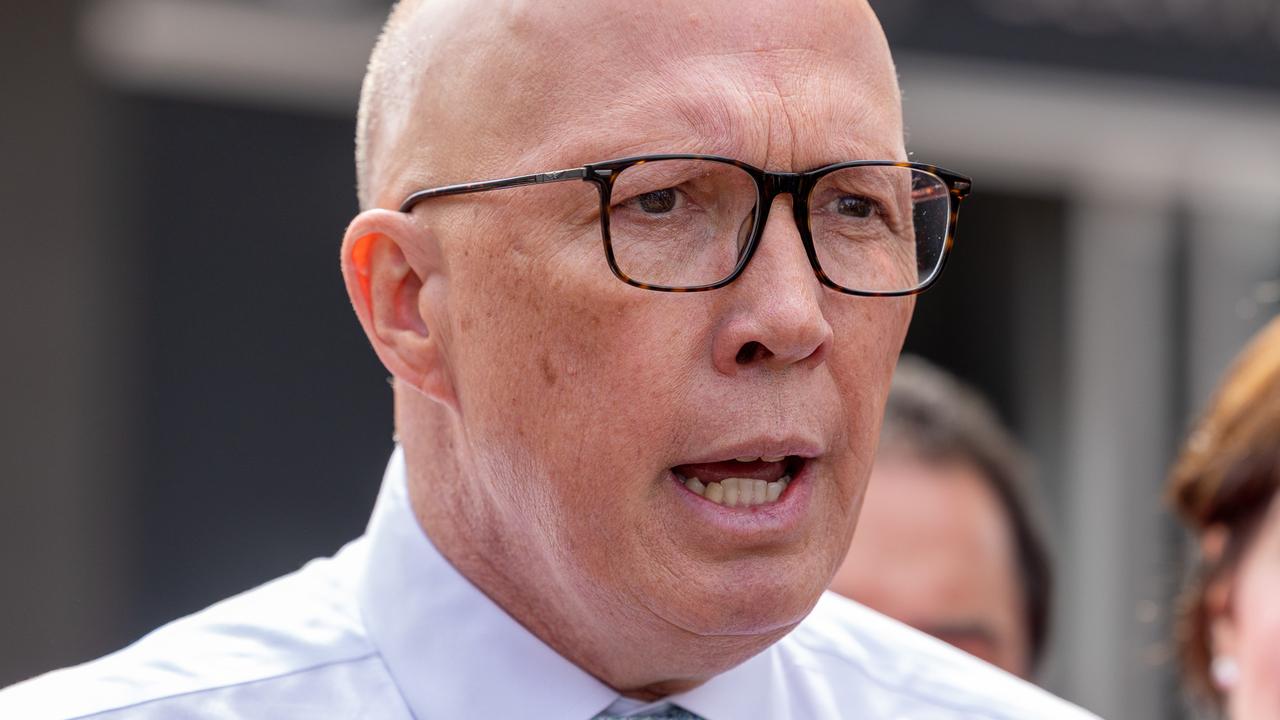Interconnector power funding breakthrough as AER agrees Project EnergyConnect can cost $2.3bn and TransGrid commits to project
The long-promised, major energy link between SA and NSW has taken a big step forward – but power prices will rise before they fall.

SA News
Don't miss out on the headlines from SA News. Followed categories will be added to My News.
In another big step forward for the South Australia-NSW electricity interconnector, funding agreements have been locked in as the government flags more than $5 billion worth of renewables projects will be shored up by the works.
The Australian Energy Regulator agreed on Monday the project can cost $2.28 billion, which is $55 million less than a revised estimate from the companies proposing the project.
In a related development, NSW’s TransGrid has committed to building the line after borrowing money from a federal agency.
The project is tipped to save SA households $100 a year – but bills would increase by $6 then $17 a year before the savings kick in.
A key part of the State Government’s promise to cut power prices, the 900km power transmission line, called Project EnergyConnect, would link Robertstown in SA and Wagga Wagga in NSW, with a spur line to Red Cliffs in Victoria.
The SA side is proposed by ElectraNet, which is expected to decide within days whether to commit to its $457 million part of the project.
More than 200 construction jobs would be created in SA and 1500 in NSW.
“The AER and TransGrid decisions are a significant milestone for Project EnergyConnect, which is a project of national significance and a priority project for the national electricity grid,” ElectraNet chief executive Steve Masters said.
AER chair Clare Savage said the regulator’s assessment would ensure consumers paid no more than needed to build the interconnector.
“It is consumers who ultimately pay for big energy infrastructure projects like this, so the AER’s job is to ensure that the project costs are efficient,” she said.
“While consumers will pay for Project EnergyConnect over the life of the asset, in the short term this will increase annual bills by $6 for SA households and $11 for NSW households in the financial year 2022–23, and by $17 for SA households and $22 for NSW households each year during the 2023–28 period.
“However, the project is expected to provide benefits to consumers over the long term by allowing for additional renewables and low-cost generation, while improving security and diversity of supply for energy users in SA and NSW.”
SA Energy and Mining Minister Dan van Holst Pellekaan welcomed the cost and funding announcements, saying the interconnector would help secure the future of $5 billion–$10 billion worth of renewable energy projects planned for SA.
“These companies … are now right on the edge of being able to say that now they’ve got customers in NSW in addition to the South Australian customers to sell their electricity to,” he said.
“We’re talking about thousands and thousands of jobs in SA.
“Project EnergyConnect will help protect SA from blackouts, make SA a national exporter of clean energy and guarantee we reach our goal of to cut our emissions by 50 per cent by 2030.”
Opposition energy spokesman Tom Koutsantonis said household prices would rise immediately but promised savings were years away.
“The interconnector will cause gas-fired power stations in SA to close, making us completely reliant on NSW,” he said.
“This will make Labor’s plan for a government-owned, hydrogen-powered power station even more important.”
TransGrid chief executive Paul Italiano said the line would be the biggest electricity interconnector built to date in the national electricity market.
“It will help to accelerate Australia’s energy transition by connecting customers with more renewable generation,” he said.
“EnergyConnect will also help to abate an estimated one million tonnes of carbon emissions each year contributing significantly to meeting Australia’s climate change targets.”
TransGrid and ElectraNet had applied to the Australian Energy Market Commission to be allowed to begin charging for the project before it was fully built.
This was rejected but ElectraNet has now secured a funding arrangement with the federal Clean Energy Finance Corporation for $295 million hybrid debt instrument.
CEFC chief executive Ian Learmonth said it would be the largest single investment the agency had made.
Project EnergyConnect is still undergoing environmental impact assessment.
The companies aim to begin construction later this year.
It sounds wonderful – but consumers are right to be sceptical
Analysis – Chris Russell
Consumers are highly sceptical about promises on electricity after years of pledges not matching reality.
Understandably, there will be doubt over the announcement the South Australia-NSW interconnector is close to a go-ahead and household bills will fall by $100 a year.
Hurdles remain: ElectraNet must make a final investment decision, but as it has already flagged its commitment, this is a sure bet.
Environmental and technical approvals are needed but have been in consultation for years, so are an easy wager. The biggest uncertainties are over the effect of the line.
There is near-unanimous agreement it would improve reliability.
In a grid increasingly based on weather-dependent generation, there is strength in connections to multiple areas where the wind is blowing, the sun is shining or excess power has been stored as pumped water for hydro-electricity or as hydrogen.
In the short term, SA will lack bulk storage of renewable energy until a hydrogen industry develops. In the medium term, NSW will face a crisis if it has no alternatives when its coal-fired power stations close.
Both states stand to gain reliability from a link.
Most analysts expect a link to cause an early closure of gas-fired power stations in SA. That seems likely with older stations but not all – AGL has just invested $295 million in gas at Barker Inlet, alongside its 250 megawatt, one-hour battery being built at Torrens Island.
The transmission line will make many more renewable energy projects along the route viable by creating a bigger market. This would create excess power at the scale needed to make hydrogen production attractive. Where Project EnergyConnect becomes more speculative is in prices at a household level.
There are so many dynamics; estimating years ahead cannot be precise. The projected net benefit of $100 a year is the best assumption at this time, and definitely better than the costs of lower reliability. But it is not a guarantee.




